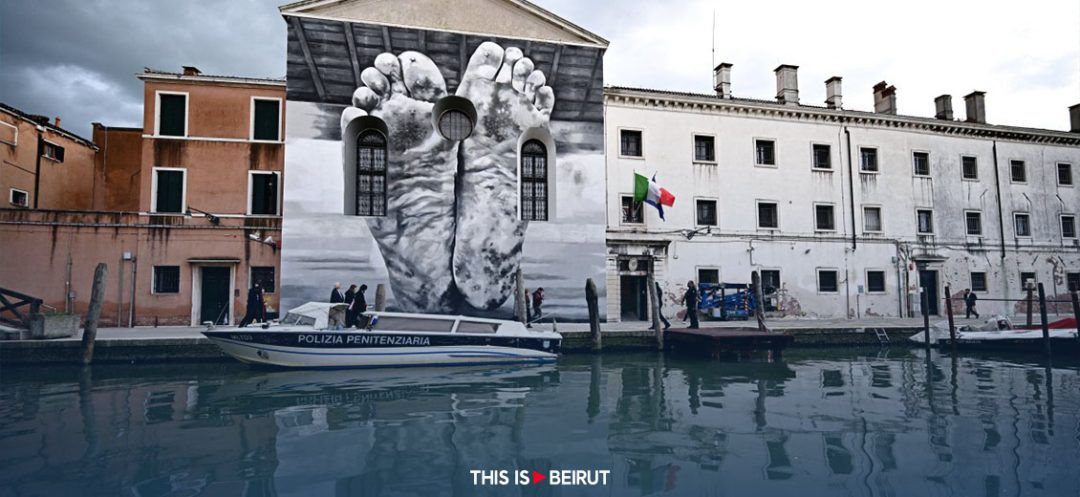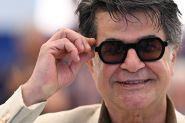
©Photo Credit: Gabriel BOUYS / AFP
After more than a quarter-century in the world of art, JR, a street artist of international acclaim, continues to be driven by a passion for travel and exploration. At 41, the French photographer, recognizable by his signature black hat and glasses, has embarked on an audacious project: adorning an entire car of the Venice Simplon-Orient-Express with his iconic oversized photographic collages.
Talking about reimagining the Orient-Express into art, JR stated to AFP on the sidelines of the 60th Venice Biennale of Contemporary Art, "Everyone knows the Orient-Express, but many don't realize it still operates." For this special occasion, the midnight blue sleeping-car, immortalized by Agatha Christie’s mystery novel and its cinematic adaptations, was showcased on a barge this week in the Venetian Lagoon before its slated European rail journey in spring 2025.
Inside this "living artwork," which includes a tea room and a library, JR utilized the event to playfully incorporate various nods to his past work, ranging from letters and binoculars to a 1920s camera. "It's one of those cars that has lived a thousand lives. When we found it in Belgium, it was still charred and dented, having been abandoned for a long time," he reminisced, expressing his "fascination" with the world of trains.
JR sees rail transport as a means to "carry" his works across the globe, "like a message in a bottle." His ephemeral art, featuring monumental trompe-l'oeil works, portraits and collages, has traversed international borders from the favelas of Rio to the Louvre, from New York to Nepal, culminating in retrospectives at prestigious museums.
Often, his pieces delve into social issues such as women's rights (Women are Heroes), migration (Déplacé.e.s), and gun control (Guns in America).
Before his accolades and festival appearances, the artist's inspiration was sparked by "travels on the metro or RER in Paris." "When I was 16/17 years old, cameras started becoming digital. Photography was no longer a rich man's hobby. Then travel became democratized; you could fly or take trains to the other end of the world for almost nothing. I don’t think I would have become an artist if I hadn't been born that year," he shared.
Beyond his geographic mobility, JR enjoys navigating "a path into the unknown," like the worlds of ballet, opera and trains. "Ultimately, this is where I think I learn the most," he acknowledges. Integral to his journey is the engagement with people, which he claims as "infiltrating art" that actively involves communities and audiences to blur the lines between subjects and participants.
In November, 25,000 spectators witnessed a sound and light show featuring 153 dancers on an immense scaffold in front of Paris' Palais Garnier, transformed into a cavern by the artist. Despite the threat of rain, terrorist alerts and technical uncertainties — which made the project "more likely to fail than succeed" — the performance was mesmerizing. "What people don't realize is that we didn't know if it was going to work. But if it does, suddenly, it's something that's never been done. For me, that's a sign that it's an interesting path," he explained.
"This is still what I do today: travel, confront images with others, change perspectives, but above all, question. Because I think that's the greatest strength of art."
With AFP
Read more



Comments